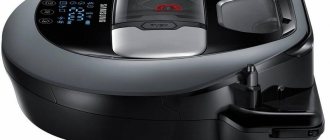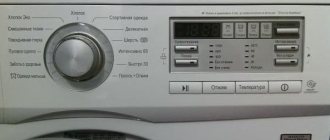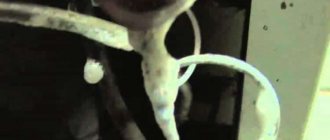Household appliances have firmly entered the life of almost every person, constantly helping and performing a number of daily tasks instead of him. Today it is difficult to imagine a house in which cleaning would be carried out without the use of a vacuum cleaner. However, frequent use of this device leads to its rapid failure. Usually, problems that arise can be repaired independently, without contacting a service center. But for this you need to correctly diagnose and know the mechanism of the vacuum cleaner. Below are the main methods for repairing LG vacuum cleaners, one of the most common brands of home appliances.
Typical breakdowns
Among the main reasons for the failure of vacuum cleaners are the device being turned off or completely unable to turn on, the motor overheating or a decrease in suction capacity. As practice shows, the poor quality of the mechanism itself does not always lead to breakdowns. Most often, these are elementary violations of operating rules. Therefore, a timely cleaned garbage container and a changed filter will prevent the occurrence of malfunctions of the vacuum cleaner and will significantly extend the service life of the entire device.
Why do brushes spark?
Brushes can be called the weakest element of a commutator motor: during operation of the unit, they are subject to constant friction, which leads to their wear . This point is especially noticeable on copper surfaces, where a layer of coal dust accumulates during brush operation.
Design Features
In normal sliding mode, a small break occurs in the electric current circuit. Microscopic arcs appear, and this is a faithful companion of sparks. Here you can add a decent inductive reactance of the motor windings.
At maximum load on the unit, even with new brushes, there will always be a spark. Visually this may not be so noticeable, especially on low-power models, but sensitive equipment located in a room with a working vacuum cleaner will make this known in a specific background. Therefore, filters are installed on televisions, personal computers and other devices to eliminate such interference.
Wear
The part of the brush that comes into contact with the commutator is made of carbon. Over time, its length decreases, as does its total volume. As a result, the spring pressure weakens, and gaps appear, and with them sparks.
Graphite brushes for vacuum cleaner
Homemade brush
The element must fit tightly into the grooves and be positioned strictly perpendicular to the axis of the rotor shaft. If the brush is smaller than the required size, a skew will appear. This will again lead to sparking, and at the same time a decrease in engine performance. Therefore, here it is better to give preference to industrial options rather than homemade ones.
What to do if the vacuum cleaner from LG does not turn on
Many factors can lead to a situation when the vacuum cleaner stops turning on, but the most common of them are:
- clogged dust collector or filters - leads to the mechanism operating in a state of constant overload, which causes engine overheating;
- contact interruptions - occur when the cord or socket is damaged;
- wear of parts and individual engine components.
When encountering such “behavior” of equipment, first of all you should carefully conduct a diagnosis. And after clarifying the cause of the breakdown, make a decision on further repairs.
Expert opinion
Nikolai Petrovich
Subpage for an expert
Before carrying out repairs, make sure that the power cord is not plugged into a power outlet.
Diagnostics
In order to understand why the vacuum cleaner does not turn on, it is recommended to use the elimination method. The main actions must be carried out in the following sequence:
- Check the working condition of the outlet.
- Inspect the power cord and plug.
- This is followed by checking the degree of filling of the dust container and cleaning the filters.
- Contamination of the motor or failure of a part or entire engine assembly.
Solution
Each diagnostic stage is accompanied by the following actions:
- To check the outlet, connect the vacuum cleaner to any other outlet in the house and turn it on. If the motor continues to be silent, you need to move on to the next step.
- When inspecting the cord and plug there should be no external damage. There is melting on the plug, and bends on the cable.
- The filters should be replaced with new ones, and the bag should be cleaned of debris and dust, rinsed under cold water if it is plastic and not rag. The dust collector can only be replaced after it has completely dried.
If none of the above actions gave the desired result (the vacuum cleaner still does not turn on), then the reason lies in a motor failure. This malfunction is quite serious and its solution requires certain skills.
In order to get to the motor, you need to disassemble the vacuum cleaner itself. This procedure consists of several steps:
- Unscrew the lid of the dust collector using a screwdriver, and then remove the mesh for sealing and disconnect the electrical unit;
- take out the dust container and unscrew all visible screws of the compartment;
- The motor is disconnected from the power cable by unclamping the screw terminals.
First of all, after removing the motor, it is necessary to carry out a visual inspection:
- take out the brushes and change them if they are worn out;
- assess the condition of the armature collector;
- if the copper plates are heavily soiled, clean them with fine-grade sandpaper;
- inspection of bearings (the integrity of the cage is checked, the absence of cracks, lubrication is carried out);
Rotation of the bearings inside the socket during manual rotation of the armature indicates the need to disassemble the engine.
When disassembling a washing vacuum cleaner, you will also need to dismantle the water pump, which is done by disconnecting the water supply pipes.
Problems with improper disassembly
Careless handling of the tool and its use for other purposes may lead to the following problems during disassembly:
- Impeller damage. They are caused by attempts to hold the engine shaft by the impeller while unscrewing the nut.
- Damage to the brush holder. They arise as a result of attempts to jam the shaft by inserting a screwdriver or pliers through the openings of the brush holders without dismantling the brushes.
- Damage to the rotor contact group. The reason is the same - attempts to hold the rotor with pliers or jam with a screwdriver.
To avoid these problems, it is enough to follow the recommendations outlined above.
Disassembling the LG vacuum cleaner motor
The design of the electric motor of LG vacuum cleaners is practically no different from the motors of other household appliances. Only the dimensions and location of the mounting holes may vary.
- The disassembly process begins with removing the brushes from the brush holders. To do this, use a screwdriver to unscrew the screw terminals (or spring clamps).
- Next, using a screwdriver, pry up and remove the impeller casing (in some models, additional extension of the sides may be required).
- The impeller itself is fixed to the armature shaft using a nut with a reverse thread, which can most easily be unscrewed with a socket wrench (clockwise). After this, the impeller can be easily removed from the shaft by prying it off from opposite edges with a screwdriver.
- After the impeller, remove the air separator.
- Unscrew the coupling bolts on the housing and remove the armature with bearings and the top cover from the stator.
Engine repair
When starting to repair an electric motor, you need to pay attention to the following points:
- A common cause of engine failure is bearing failure. To diagnose them, visual inspection or scrolling is used. If replacement is necessary, a puller should be used. The procedure itself is simple; problems can only arise if the bearing is completely destroyed and devoid of balls. Then the inner race may stick to the shaft and one side will need to be ground off to loosen it. It must be taken into account that the actions must be as careful as possible, since the sharpening stone can damage the rotor shaft. You can also try heating and knocking it out.
- Also, the cause of motor failure may be the armature commutator, which will require cleaning. To do this, place the anchor on an emery cloth (abrasive grit 1000) and turn it easily without pressing. Next, grinding is performed, using sandpaper with 2000 abrasive.
After this, the electric motor is reassembled according to the same scheme, but in reverse order.
Do-it-yourself repair of typical problems with the ElG vacuum cleaner
With proper care, a vacuum cleaner lasts about 8 years.
But the engine power drops much earlier - and often the fault for this lies entirely with the owner of the device. Most problems can be resolved by thoroughly cleaning the filters, brushes and garbage bag. Note! The waste bin should be filled to a maximum of 80%.
If there is a crack in the hose corrugation, it can be sealed using regular electrical tape. This method is not very elegant, but effective.
If we are talking about the engine, then the easiest way is to replace worn brushes or a fuse. The parts are inexpensive and easy to get to.
How to replace bearings
When the bearings break, the vacuum cleaner begins to make a lot of noise, the power drops, and the engine works with strain. You can determine the malfunction of a part either by eye or by touch. To replace bearings you need:
- Carefully pull the shaft out of the stator.
- Using tweezers, remove the anthers and rinse them with water.
- If the balls are damaged, replace them with new ones. In other cases, you can lubricate them and place them back.
Why does the LG vacuum cleaner heat up and turn off?
Heating of the vacuum cleaner body during operation (with possible shutdowns before cooling) is an important indicator of a malfunction in the mechanism. Sooner or later, this behavior will inevitably lead to breakdown of the entire device. Therefore, engine heating cannot be ignored; diagnostics should be carried out as quickly as possible and a decision on further actions should be made.
Diagnostics
In order to identify the cause of the case heating, it is recommended to use the method of elimination:
- Turn on the vacuum cleaner with the hose disconnected - if the body stops heating, then the problem lies in the hose itself or its nozzle.
- If the device continues to heat up, then an external inspection of the inlet hole is carried out for the presence of foreign objects or large debris.
- Remove the dust container and turn on the vacuum cleaner. If the electric motor stops heating up, then the problem is that the bag is full.
- Clean or change filters.
On average, the HEPA filter requires replacement once every six months or after 50 hours of continuous operation of the vacuum cleaner.
If, after passing the diagnostics, the housing continues to heat up, the main reason must be sought in the operation of the motor itself. In this case, there are two options: with a certain skill, the user can independently fix the breakdown. However, most often this kind of malfunction requires service intervention.
Solution
After identifying the reasons for the engine heating during operation of the vacuum cleaner, it is necessary to begin eliminating them:
- Dirty filter. During operation of the vacuum cleaner, a large amount of debris and dust from the sucked air constantly accumulates on the surface of the filter. This kind of contamination reduces throughput and negatively affects the engine, increasing loads and leading to overheating. Therefore, the filtration system needs to be systematically replaced and cleaned. In this case, the possibility of having several filters in one device (at the air inlet and at the air outlet) should be taken into account.
- Overflowing garbage bin. A bag completely filled with debris and dust becomes a real obstacle to air flow. Some models are equipped with an automatic system to turn off the device if the dust container is full, however, even they do not always work. Therefore, each user must check the fill level independently from time to time. If a reusable bag is used, it should be washed periodically, since even after shaking out, a large amount of fine dust remains in the fabric. The dust collector can be reinstalled after washing only after it has completely dried.
- Failure of components or individual engine elements. In this case, it is recommended that only people who have already had experience in such work undertake repairing the engine. Since the cause can be a breakdown of any of the existing parts, and also taking into account the metal of the body (aluminum is most often used, which is easily deformed), attempts to repair the vacuum cleaner can lead to its final failure or even greater damage. Therefore, it is better to immediately contact the service center specialists.
Malfunctions in which you will have to disassemble the vacuum cleaner
The main working unit of a household appliance is the motor. If it starts to work incorrectly, you cannot use the vacuum cleaner. Engine malfunction is determined by the following signs:
- the brushes wear out quickly, and strong sparking is visible through the ventilation holes;
- the sound has changed, extraneous noise has appeared, vibration has increased;
- the speed is not regulated by the wheel, it floats or falls immediately after turning on the vacuum cleaner;
- The engine stops abruptly after switching on or does not start.
Extraneous noise and vibration are easier to eliminate. The cause is worn bearings. If the vacuum cleaner works quietly, but there is strong sparking of the brushes and unstable speed, then the problem lies in the electronic unit, armature or stator windings of the motor. In any case, in order to identify the problem and carry out repairs, the LG vacuum cleaner will have to be disassembled.
The vacuum cleaner does not suck up dust, what should I do LG
In the event of a sharp decrease in the suction capacity of the vacuum cleaner, many users immediately add the LG vacuum cleaner to the list of low-quality household appliances. However, this is not true. Most often, this problem occurs due to improper operation of the device, and the breakdown itself is quite easy to fix on your own.
Diagnostics
If the vacuum cleaner begins to suck in dust poorly or does not suck up debris at all, the reason for this may be:
- an overfilled garbage bag;
- clogged filtration system;
- presence of mechanical damage;
- clogged hose or inlet;
- failure of the electric motor.
Solution
- Check the filling level of the bag. Many modern models are equipped with a full indicator on the case, which changes its color to red when the dust container needs to be cleaned. Typically, the suction power level decreases significantly when the bag is 2/3 full.
- Clear filters. It is regularly necessary to check the cleanliness of the filter both installed in front of the engine and at the air outlet of the device.
- Check the integrity of the hose and brush. Often the hose may have damage or cracks that allow air to pass through and thereby reduce suction power. As for the brushes, they can become clogged with collected debris. You also need to make sure that the brush roll rotates freely. To make sure there is no debris stuck in the hose, use a thin wire to clear it.
- Check the engine. If you have experience disassembling electric motors, you can try to fix the breakdown yourself. The most common reasons for a decrease in the suction capacity of a vacuum cleaner can be a blown fuse (replace with a new one), a broken contact in one of the wire connections (soldering), wear of the brushes (replace). But there are also breakdowns that cannot be repaired at home. One of them is a break in the winding on the coil.
Most of the problems that users encounter during the systematic use of a vacuum cleaner can be easily eliminated at home. Moreover, adhering to the operating rules, namely timely emptying the dust collector of debris and changing filters, will prevent further breakdowns. If the cause of the vacuum cleaner failure is a motor malfunction, you can try to disassemble the motor yourself and repair it. However, without proper experience, such actions can only aggravate the problem. In this case, it is recommended to contact after-sales service, where specialists will be able to carry out high-quality repairs.
You will find more interesting information on this topic in the “ Repair ” section of our portal.
Features of disassembly using the example of popular models
The design of the electric motors of most modern vacuum cleaners, despite the variety of brands, shapes and manufacturers, is very similar. Next, we will consider options for disassembling the engine using the example of several popular brands.
LG
LG engine before disassembly
As in other models, first of all, it is necessary to remove the brushes and their mounting unit. They are fixed with screws or spring latches, which are pressed out with a thin flat screwdriver. Next, the impeller casing is dismantled. If it is rolled, the sides need to be carefully bent with a thin screwdriver or a narrow metal plate. If it is held on by friction, it is removed by carefully tapping it with a wooden or rubber mallet.
Next comes the turn of the nut. Experienced craftsmen offer several ways to unscrew it:
- Wedging. A flat-head screwdriver is inserted into the end hole until it wedges the stator and rotor. In this case there is a very high risk of winding damage.
- Bars. The method is described above. Clamp the blocks in a vice very carefully so as not to damage the rotor contacts.
- Wire. You will need 30 cm of soft insulated wire (up to 2.5 mm in diameter). The wire should be inserted through one brush window, loop around the rotor contacts and bring the end of the wire out the other window. While rotating the rotor, you should wind the wire around it so that the turns are laid close to each other, and the entire width of the gap between the rotor and stator is filled. Thus, the shaft will be jammed, but due to the softness of the insulation, no damage will be caused. Instead of wire, you can use a long strip of fabric. After unscrewing the nut, the wire or fabric is carefully removed, gradually turning the shaft in the opposite direction.
- I cut through the end of the shaft. This method requires great precision in execution. It's worth trying if your plumbing skills are at a sufficient level. The end of the shaft, together with the upper part of the nut, is sawn to a depth of one and a half to two millimeters so that a slot is formed, sufficient to hold the shaft with a flat screwdriver. It is convenient to make cuts using a hand engraver, a Dremel, or simply a drill in which a diamond-coated disk is clamped. You should also gently heat the nut with a portable torch to soften the sealant or paint holding it in place. By holding the shaft with a flathead screwdriver, you can easily remove the nut.
Sawn slot
Important! After sawing, it is necessary to remove metal filings from the surface of the impeller with a vacuum cleaner so that they do not get into the engine.
Further disassembly, as with vacuum cleaners of other brands, is not difficult. After removing the impeller, the remaining engine parts secured with screws are dismantled.
LG engine after disassembly
Bearings are removed using universal or specialized pullers. If the bearing is so damaged that the balls have fallen out of it, the inner race is ground off with an abrasive wheel so as to minimally touch the rotor shaft. After this, the grip of the clip weakens, and it is removed by tapping with a small hammer.
Samsung
The design of the electric motor used in Samsung vacuum cleaners is very similar to the LG motor
Disassembly should always begin by dismantling the brushes and their attachment point. Samsung attaches the brush holders with screws.
Then you can proceed to further disassembly of the engine. The most difficult thing in this case is to unscrew the nut. Home craftsmen recommend using similar methods for Samsung vacuum cleaners:
- cutting a groove in the end of the shaft;
- fixation with wire, cord or strip of fabric;
- fastening in a vice with wooden blocks.
These methods have been described in detail above. The choice of a specific method depends on the available equipment and the plumbing skills of the home craftsman.
In the days before perestroika, all Soviet electric motors were produced with a spline at the end of the shaft. This was due to their more than average workmanship and the guaranteed need for repeated disassembly for repairs during operation. Modern engines from leading manufacturers are designed and manufactured in such a way that their service life is sufficient to last the specified service life. Disassembly and repair are not structurally provided; the service policy is focused on replacing the entire unit.
This challenge is accepted by domestic home craftsmen who love to get to the bottom of things and fix everything, regardless of the cost of time and money.
The top engine cover on Samsung is not crimped around the entire perimeter, but in four places. It is enough to find the first one - the rest will follow after 90o. The crimping points must be leveled with pliers, after which the cover is removed by hand.
The impeller is secured through a gasket with two clearly visible screws.
To remove the rotor, you must:
- unscrew the four screws holding the fastening bar holding the bearing race;
- remove the protrusions from the grooves in the engine cover;
- knock out the rotor with the lower bearing through the wooden spacer.
Bosch
Most home craftsmen agree that it is better not to disassemble products manufactured by a German concern. Cases of successful repairs at home are practically unknown.
The same can be said about other brands - Philips, Beko, Miele, AEG and others.
How to avoid vacuum cleaner breakdowns
First of all, you need to monitor the engine temperature. Overheating will damage not only the motor itself, but also damage the electronics. If the body of the vacuum cleaner gets too hot, you should turn off the device and give it time to cool down. Most budget and mid-budget models need a rest after 15-20 minutes of continuous work.
Engine heating is also affected by clogged filters, filled bags, containers and foreign objects in the cooling system.
An ordinary vacuum cleaner is designed for the same ordinary dirt. When collecting metal shavings, soot or construction debris, the filter becomes clogged in a matter of seconds, and the engine temperature rises before our eyes. If the device is not designed for wet cleaning, then the ingress of water, albeit not immediately, will lead to the growth of corrosion of the metal elements of the unit.
Moisture compacts dust, and its accumulation on the impeller can cause an imbalance in the operation of the element. HEPA fine filters, which are responsible for the quality of the outlet air, are also picky about water. Due to increased moisture, the fibers begin to swell, and soon mold appears.
Source
Diagnostics
In order to determine the cause of wear on the brushes for the vacuum cleaner motor, it is necessary to carry out diagnostics. First you need to disassemble the vacuum cleaner, then disassemble the engine.
How to disassemble a vacuum cleaner:
- Using a screwdriver, unscrew the screws from the vacuum cleaner body;
- remove the vacuum cleaner cover;
- separate the device body by disconnecting the wires from the control board;
- remove the motor from the plastic device.
How to disassemble the engine:
- Use a thin screwdriver to remove the impeller casing;
- disassemble the fastening by unscrewing the nut;
- remove the brushes, unscrew the housing clamping screws.
Troubleshooting brushes for electric motors of a vacuum cleaner
| Malfunction | Cause | Elimination |
| Wrong angle of the brushes for the vacuum cleaner motor |
|
|
| Poor contact between technical elements |
|
|
| Pollution |
|
|
Disassembly procedure
First you need to prepare the engine for unscrewing the ill-fated nut, for which you need to unscrew its brushes from the back and remove the casing covering the electric motor impeller from the front.
Sometimes the casing just sits tightly on the engine body and to remove it, you need to use pliers to slightly bend its edges to the sides along the entire circumference, and then pick it up with a screwdriver and squeeze it out.
To unscrew the nut, we need to stop the rotor with something, but we need to do this in such a way as not to damage the winding and the armature of the electric motor, located at the rear. To do this, we need to somehow tightly clamp it through the holes on the sides of the motor housing into which the brushes were inserted.
This can be done using small wooden blocks, which can be inserted into the side holes of the engine brushes, and then pressed tightly to the armature with some suitable tool - a bench vise, for example.
For this, we need small blocks, about 4 cm long and about 1 cm wide. Adjust their sizes yourself so that they fit into the holes, rest against the anchor and at the same time their ends protrude outward with a small margin - so that they can be clamp in a vice. And so that they tightly compress the rotor and do not jump off it during compression, their ends need to be filed a little with a round file.
Then we insert the prepared bars into the holes of the electric motor with the sawn ends inward and press them firmly against the armature with a bench vice to secure it from turning when unscrewing the nut from the other end of the rotor.
Now that the engine rotor is locked, you can take a wrench or a wrench with a suitable socket and easily unscrew the “problem” nut that caused us so much extra trouble.
If the nut is stubborn and does not want to give in, it needs to be heated to melt the sealant holding it to the thread. This must be done by “spot” heating using a small burner, so as not to damage the plastic of the impeller.
After this, all other engine parts can be easily removed using ordinary screwdrivers. And we can see what is wrong or what is causing the suspicious noise when the electric motor is running.
Appearance and equipment
The device has a design traditional for “dry” vacuum cleaners; the manufacturer produces the model in a variety of colors - from dark red and blue to light gold. Some parts are made in black. The case material is durable plastic with wear-resistant metallized coating.
The basic package includes attachments:
- slotted;
- for upholstered furniture;
- universal with floor/carpet switch.
If necessary (if you have long-haired animals at home), you can use a vacuum cleaner with a turbo brush (purchased separately).
The device is supplied to the buyer with a standard fabric dust collector. If desired, the owner of a vacuum cleaner can use disposable paper dust containers, selecting options for this model or purchasing universal bags. Optionally, the delivery set can include 5 disposable paper containers.
Device of various models
In the time since its invention, not only the design and appearance of the vacuum cleaner have changed significantly. Modern devices have a built-in processor and remote control. This feature improves the safety, comfort and maintainability of modern dust cleaners.
The installation and circuit diagrams of all models of LG vacuum cleaners can be found on websites on the Internet. There you can also watch a video on their disassembly and assembly with expert advice.
If you do not have the required information or have any other questions, you can contact your local dealer or manufacturer by email.
If you have unsure knowledge of a foreign language, you can use online translators for translation, which are available on all major Internet portals. Technical descriptions and instructions do not contain complex grammatical structures. The electronic guide translates them quite accurately.
You must also remember that you will lose your right to warranty service for the product after you open the vacuum cleaner body yourself. For this reason, before the expiration of the factory warranty (usually 12 months), it is strictly prohibited to open the case yourself and carry out any types of maintenance and repair work.
Failure to comply with this requirement will remove the device from warranty service.
To best meet user needs, the company's developers produce:
- cyclone type units;
- units for wet cleaning of premises;
- built-in HEPA carbon filters to clean the air from foreign odors;
- blocks with STEAM technology for treating carpets, flooring and household items using superheated steam;
- built-in unit for vacuum cleaning.
The design of individual parts and assemblies and their availability depend on the specialization of the dust cleaner. The fan impeller mounted on the shaft of a high-speed electric motor creates a high-speed air flow, which, when passing over a dusty surface, carries dust and small particles of debris along with it.
Debris and dust settle on the coarse cloth filter in the dust collector (in cheap models) or stick to the surface of the air bubbles of the water block (in Cyclone models). The dust-free air is released into the room through an opening in the vacuum cleaner body.
The most widespread of the LG vacuum cleaner line for home use are the following units.
LG VK70363N
Properties:
- powerful motor 1.2 kW;
- small sizes;
- there is no specialized dust collector;
- fine air filter HEPA-10;
- boot capacity – 1.4 liters;
- plastic carrying handle.
LG VK70601NU
Technical features:
- operating principle – “cyclone”;
- nameplate engine power – 0.38 kW;
- dust compartment capacity – 1.2 liters;
- centrifugal non-contact rotation speed sensor;
- fine filter;
- sliding pipe;
- power cord – 5 meters;
- noise load – no more than 82 dB;
- weight – 4.5 kg.
LG V-C3742ND
Passport details:
- electric motor power – 1.2 kW;
- boot capacity – 3 dm³;
- weight – 3.8 kg.
Robot vacuum cleaner R9 Master
Performance characteristics:
- full automatic;
- possibility of training (scanning the room, reacting to a whistle, flashlight);
- movement along a given route;
- automatic search for a 220V outlet for battery recharging;
- built-in ultrasonic water sprayer;
- Smart Inverter motor;
- two-stage Axial Turbo Cyclone turbine;
- built-in computer with a dual-core processor, 4Gb of RAM, 500 Gb hard drive;
- laser ultraviolet illumination;
- motion sensors on the sides of the body;
- floating chassis suspension.











